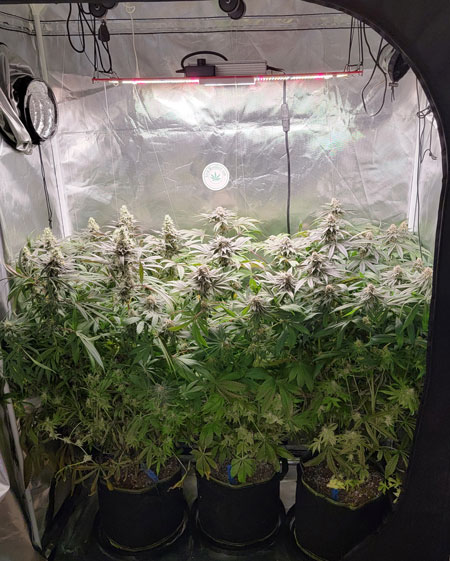this has some referneces that might be useful:
https://www.sciencedirectt.com/science/article/pii/S0926669025014645
"
Concurrently, growers often prune, or mechanically damage, their plants (
Danziger and Bernstein, 2021a). Mechanical damage to plant tissues has been shown to induce wounding responses akin to the herbivory response wherein the synthesis of secondary metabolites is increased (
Ali et al., 2024). This can alter source-sink relationships, particularly the partitioning of carbohydrates (
Verdonk et al., 2023), which can influence biomass allocation (
Nie et al., 2021,
Nie et al., 2023). When applied to
C. sativa, pruning can take many forms (e.g., topping, lollipopping, defoliation etc.). While definitions do not appear to be uniform between studies, all approaches aim to increase flower yield and/or cannabinoid concentrations by affecting biomass partitioning and stimulating secondary metabolite synthesis, respectively.
Topping, lollipopping, and defoliation have distinct modes of action affecting cannabis growth and yield. By removing the shoot apical meristem, ‘topping’ encourages the growth of lateral branches due to relaxed apical dominance, thus achieving greater flower mass across the canopy (
Folina et al., 2020,
Crispim Massuela et al., 2022). This method can be paired with the ‘Screen of Green’ cultivation method, whereby fewer plants with highly branched canopies are maintained (
Arora and Yun, 2023). ‘Lollipopping’ involves removing non-productive growth low in the canopy that is thought to have low flower mass or low cannabinoid yield, thereby directing carbon allocation towards floral production (
Crispim Massuela et al., 2022). Indeed, it has been shown that the concentrations of most cannabinoids is higher in inflorescences closer to the apical meristem, and self-shaded branches lower in the canopy produce less floral biomass and have reduced cannabinoid content (
Bernstein et al., 2019,
Crispim Massuela et al., 2022,
Stack et al., 2023). Finally, defoliation involves removing fan leaves (large palmately compound leaves that grow directly from the main stem and side branches, often made up of five to nine leaflets) from both the main stem and side branches to achieve an open canopy structure that is thought to allow better airflow (which helps mitigate disease risk) and light penetration to flowering sites. Light intensity (LI) correlates with floral biomass in cannabis (
Holweg et al., 2024), so increasing the available photosynthetically active radiation at all flowering sites can theoretically increase dry floral biomass.
Defoliation is perhaps the most labour- and time-intensive of the described pruning methods as it involves carefully removing fan leaves across the entire plant canopy. Danziger and Berstein (2021
a,
b) show that defoliation increases the concentration and uniformity of certain cannabinoids across the canopy. However, cannabinoid yield was not increased by defoliation for all cultivars because dry flower weight sometimes decreased (
Danziger and Bernstein, 2021a,
Danziger and Bernstein, 2021b). The relatively low harvest indexes reported for each of their treatments may have come about due to low canopy LI. Further,
Sandoval et al. (2024) show that damage to field-grown hemp with a flail (which they term ‘defoliation’) increases CBD, cannabidiolic acid (CBDA), cannabidivarinic acid (CBDVA), cannabigerol (CBG), Δ9-THC), tetrahydrocannabinolic acid (THCA), tetrahydrocannabivarin (THCV), and tetrahydrocannabivarinic acid (THCVA) concentration if performed during the early flowering stage.
Toth et al. (2021), on the other hand, found that mechanical wounding of field-grown hemp did not cause significant changes to the cannabinoid potency of the flowers. Beyond this, there is a lack of research into the effects of proper defoliation on
C. sativa growth and yield in indoor settings."



